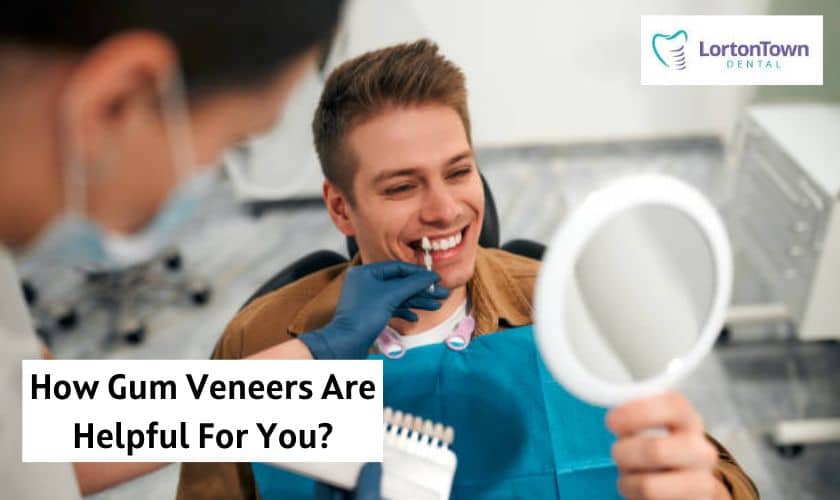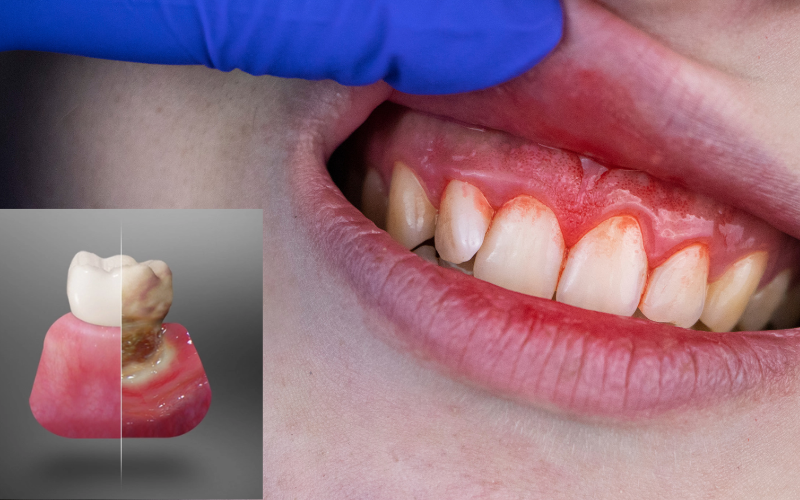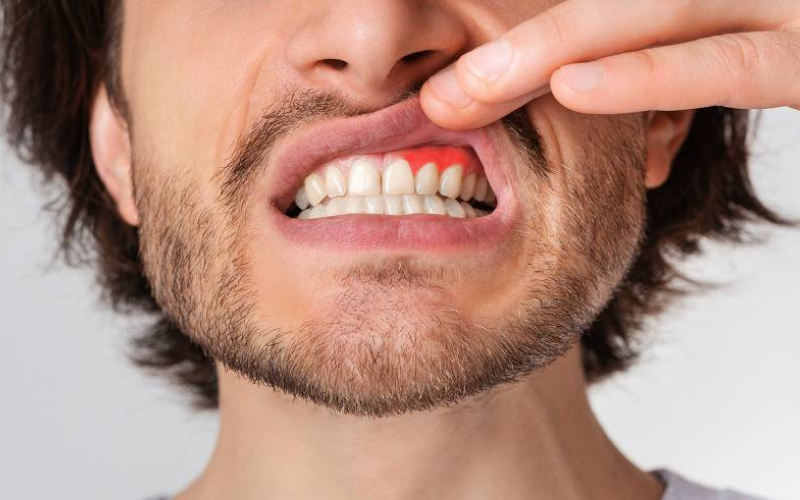(703) 372-5665
All You Need To Know About Gum Veneer

All You Need To Know About Gum Veneer
If your gums are receding, you may be wondering how it will affect the look of your smile, if there’s a way to grow back the gum (or gingiva) you’ve lost, and what could be causing it. Unfortunately, gums can’t grow back, but there are some things you can do to make your smile better after a gum recession. A gum (or gingiva) veneer is the least invasive choice.
Just like porcelain veneers can make your teeth look better, a gum veneer can make your receding gums look better. Gum veneers aren’t as well-known as veneers for your teeth, so we’re here to tell you more about gum recession, the different types of gingival veneers you can get, how to take care of them, and how they compare to other ways to treat gum recession.
Why Does Your Gum Get Loose?
When your mouth is healthy, your teeth are snug and comfortable in your gums. The gum tissue supports the roots of your teeth and keeps them safe from decay and other problems. If your gums start to recede, they will start to pull away from your teeth. This makes your teeth more vulnerable to problems like tooth loss.
Many people are at risk for gum recession, which can be caused by genetics, changes in hormones, diabetes, smoking, brushing too hard, and not having access to professional dental care. The most common cause is gum disease, which happens when you don’t take good enough care of your teeth. Even though gum recession can’t be fixed, advances in dentistry, especially in periodontics, have made it possible to replace gum tissue that has been lost. Compared to the other treatments, which all involve surgery, gum veneers are a great choice because they don’t involve surgery.
Different Types Of Gum Veneers And How They Are Made?
Removable Veneers
Gingival veneers are like false teeth for your gums instead of your teeth. Some veneers on the gums made of acrylic, composite resin, or porcelain can be taken off. You should take them out every night before bed, and just like dentures, you should clean them every day. A report in the Journal of Clinical and Diagnostic Research (JCDR) says that people with gum veneers should wash their veneers after every meal and put them in water at night to keep them from warping.
Fixed Veneers
Fixed gingival veneers are made of ceramic and stay in your mouth for good. A study in Contemporary Clinical Dentistry says that fixed veneers are less common than removable veneers. Because they won’t come off, these veneers can be harder to clean.
Getting gingival veneers is similar to getting a crown or a replacement tooth. Most of the time, your dentist will make a mold of the area that the veneer will cover. They’ll make the first veneer and put it on your teeth to ensure it fits. Don’t worry about people seeing a new, bright-looking appliance in your mouth. Your dentist will also color it to go well with your smile.
How to Look After a Gum Veneer?
If you and your dentist decide that a gum veneer is the best way to treat your receding gums, they will also tell you how to take care of your veneer. Like what was said above, they will probably tell you to clean your veneer after you eat or at least once a day. If your veneer can be taken off, your dentist will tell you how to take it off and store it properly when it’s not in your mouth. They will also show you how to put the veneer on so it fits well and looks good.
After a dental procedure or getting a new dental appliance, you must see your dentist regularly for checkups and cleanings. After getting a gingival veneer, nothing has changed. By doing this, the chance of getting cavities or gum disease will go down. And, as always, it’s important to keep up with your excellent oral hygiene routine for the health of your real smile, not just the area around your gum veneer. You should brush your teeth twice a day with fluoride toothpaste, clean in between your teeth once a day with floss, a water flosser, or another interdental tool, and finish your routine with a mouth rinse to get rid of any remaining bacteria.
There Are Other Ways To Treat Gum Recession
If your gums are receding, veneers can be a great way to improve your smile. A gum graft is another way to treat gum disease. In this procedure, gum tissue from another part of the mouth, like the palate or upper mouth, is used to replace the missing gum tissue. Contouring and regeneration are two other types of surgery. Your dentist can tell you which treatment is best for you based on how bad your gum recession is, how much it will cost, and other factors.
If you’re worried about your gums pulling away from your teeth, talk to a periodontist or your regular dentist about your treatment options. They will help you figure out what you can do to fix the problem and feel good about your smile again. A gum veneer is a minimally invasive option that can be shaped to fit your smile without changing the rest of your mouth. But no matter what treatment you choose, it’s important to keep up a strict oral care routine, not just because your gums have already started to recede, but also to protect the gums and teeth that are still there from decay and disease.You can visit our dental clinic to know more about gum veneers.






